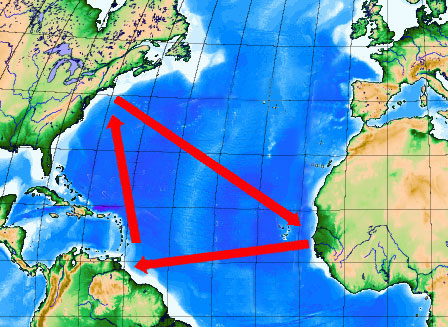A Mirror to America’s Moves (Image Credits: Unsplash)
In the charged air of international boardrooms, where every policy shift ripples like a storm across oceans, Beijing has quietly sharpened its weapons against Washington.
A Mirror to America’s Moves
Picture this: the US has long used export controls to keep advanced tech out of China’s hands. Now, in a twist that’s straight out of a strategy thriller, China is doing the exact same thing back. It’s not just retaliation; it’s a calculated echo that could reshape global trade flows.
At the heart of this shift lies China’s new rules on rare earth exports. These critical minerals power everything from smartphones to electric vehicles, and Beijing now demands approvals for any products containing even trace amounts of Chinese-sourced materials. This move directly apes the US’s foreign direct product rule, which blocks foreign companies from shipping certain items to China if they use American technology.
Experts see this as Beijing’s way of leveling the playing field. For years, the US has wielded such tools to protect national security. China, feeling the pinch from escalating tariffs, is flipping the script to defend its own interests.
Rare Earths: The Hidden Power Play
China controls about 80% of the world’s rare earth processing, giving it a massive edge in this arena. By tightening export controls, it’s not just hitting back at US tariffs – it’s signaling that no one disrupts its supply chains without consequences.
This strategy ramps up pressure on industries reliant on these elements. Think defense contractors or renewable energy firms; sudden restrictions could spike costs and delay projects worldwide. It’s a reminder that what starts as a bilateral spat often spills over into everyday tech we all use.
Yet, this isn’t without risks for China. Overplaying its hand might push allies toward diversification, weakening its monopoly over time. Still, in the short term, it’s a potent reminder of Beijing’s leverage.
From Tariffs to Tech Barriers: The Escalation Timeline
The trade tensions kicked into high gear earlier this year with US tariffs climbing to 125% on key Chinese goods. China responded swiftly, matching with its own levies and now these export hurdles. It’s a cycle that’s familiar but feels more intense in 2025.
Key milestones include April’s chip restrictions and Beijing’s rare earth decree just weeks ago. Each step builds on the last, turning economic policy into a game of chess. Observers note how China’s approach has evolved from broad tariffs to targeted controls, showing a maturing playbook.
- US imposes tech export bans on China.
- China retaliates with agricultural import curbs.
- Both sides hike tariffs amid stalled talks.
- Beijing unveils rare earth rules, mirroring US tactics.
- Global markets jitter as supply chains strain.
Businesses Caught in the Crossfire
Companies on both sides of the Pacific are scrambling to adapt. US firms with operations in China face new compliance headaches, while Chinese exporters navigate approval mazes that could slow shipments. It’s forcing a rethink of long-term strategies, from stockpiling materials to seeking alternative suppliers.
Take the auto industry: reliance on rare earths for batteries means potential price surges could hit consumers hard. Smaller businesses, without deep pockets, might fold under the pressure. Meanwhile, larger players are eyeing moves like relocating production to neutral countries.
This back-and-forth isn’t just about two giants; it affects jobs and innovation everywhere. Firms that pivot quickly – perhaps by investing in domestic mining – could emerge stronger.
Global Ripples and Alliances Shifting
Beyond the US-China duo, this feud is pulling in others. Europe grapples with its own EV tariffs on Chinese imports, while countries like Australia ramp up rare earth mining to reduce dependence on Beijing. It’s fostering unlikely partnerships, like US-led coalitions pushing for diversified supply chains.
China, in turn, courts Belt and Road partners to bolster its position. This web of alliances means the trade war isn’t isolated; it’s rewiring global economics. Analysts warn that prolonged standoffs could fragment trade into blocs, slowing overall growth.
| Tactic | US Approach | China’s Mirror |
|---|---|---|
| Export Controls | Tech bans via foreign direct product rule | Rare earth approvals for foreign products |
| Tariffs | Up to 125% on imports | Matching levies on US goods |
| Goal | Protect security and IP | Defend market access and resources |
Toward Resolution or Deeper Divide?
As 2025 unfolds, questions linger about the endgame. Will these mirrored tactics force talks, or entrench divisions? History shows trade wars often end in deals, but only after enough pain builds on both sides.
Beijing’s vow to “fight to the end” underscores its resolve, yet economic strains at home might push for compromise. For the US, maintaining pressure while avoiding self-inflicted wounds will be key. In this high-stakes game, flexibility could prove the real winner.
Key Takeaways
- China’s rare earth controls directly counter US tech restrictions, escalating the 2025 trade tensions.
- Businesses face higher costs and supply risks, urging diversification efforts.
- Global alliances are shifting, potentially leading to fragmented trade blocs.
Ultimately, this chapter in the trade saga highlights how interconnected our world truly is – one nation’s playbook becomes everyone’s challenge. What moves do you see coming next in this economic chess match? Share your thoughts in the comments.







